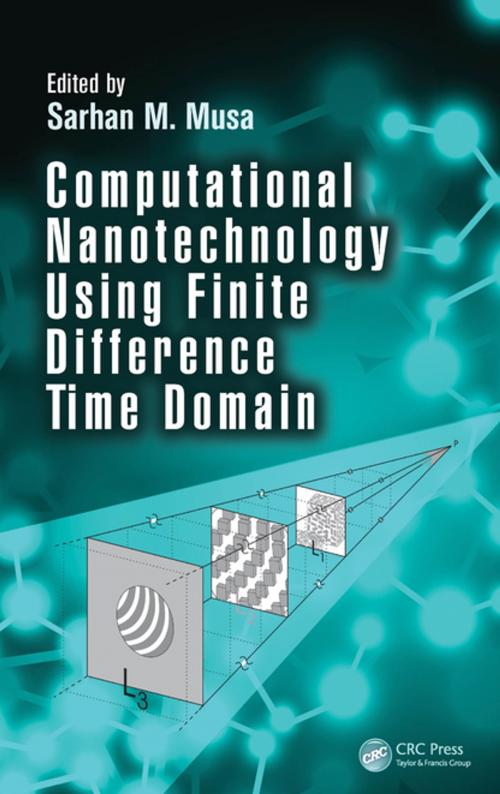Computational Nanotechnology Using Finite Difference Time Domain
Nonfiction, Science & Nature, Technology, Microwaves, Electricity, Science, Physics, General Physics| Author: | ISBN: | 9781351831734 | |
| Publisher: | CRC Press | Publication: | December 19, 2017 |
| Imprint: | CRC Press | Language: | English |
| Author: | |
| ISBN: | 9781351831734 |
| Publisher: | CRC Press |
| Publication: | December 19, 2017 |
| Imprint: | CRC Press |
| Language: | English |
The Finite Difference Time Domain (FDTD) method is an essential tool in modeling inhomogeneous, anisotropic, and dispersive media with random, multilayered, and periodic fundamental (or device) nanostructures due to its features of extreme flexibility and easy implementation. It has led to many new discoveries concerning guided modes in nanoplasmonic waveguides and continues to attract attention from researchers across the globe.
Written in a manner that is easily digestible to beginners and useful to seasoned professionals, Computational Nanotechnology Using Finite Difference Time Domain describes the key concepts of the computational FDTD method used in nanotechnology. The book discusses the newest and most popular computational nanotechnologies using the FDTD method, considering their primary benefits. It also predicts future applications of nanotechnology in technical industry by examining the results of interdisciplinary research conducted by world-renowned experts.
Complete with case studies, examples, supportive appendices, and FDTD codes accessible via a companion website, Computational Nanotechnology Using Finite Difference Time Domain not only delivers a practical introduction to the use of FDTD in nanotechnology but also serves as a valuable reference for academia and professionals working in the fields of physics, chemistry, biology, medicine, material science, quantum science, electrical and electronic engineering, electromagnetics, photonics, optical science, computer science, mechanical engineering, chemical engineering, and aerospace engineering.
The Finite Difference Time Domain (FDTD) method is an essential tool in modeling inhomogeneous, anisotropic, and dispersive media with random, multilayered, and periodic fundamental (or device) nanostructures due to its features of extreme flexibility and easy implementation. It has led to many new discoveries concerning guided modes in nanoplasmonic waveguides and continues to attract attention from researchers across the globe.
Written in a manner that is easily digestible to beginners and useful to seasoned professionals, Computational Nanotechnology Using Finite Difference Time Domain describes the key concepts of the computational FDTD method used in nanotechnology. The book discusses the newest and most popular computational nanotechnologies using the FDTD method, considering their primary benefits. It also predicts future applications of nanotechnology in technical industry by examining the results of interdisciplinary research conducted by world-renowned experts.
Complete with case studies, examples, supportive appendices, and FDTD codes accessible via a companion website, Computational Nanotechnology Using Finite Difference Time Domain not only delivers a practical introduction to the use of FDTD in nanotechnology but also serves as a valuable reference for academia and professionals working in the fields of physics, chemistry, biology, medicine, material science, quantum science, electrical and electronic engineering, electromagnetics, photonics, optical science, computer science, mechanical engineering, chemical engineering, and aerospace engineering.















